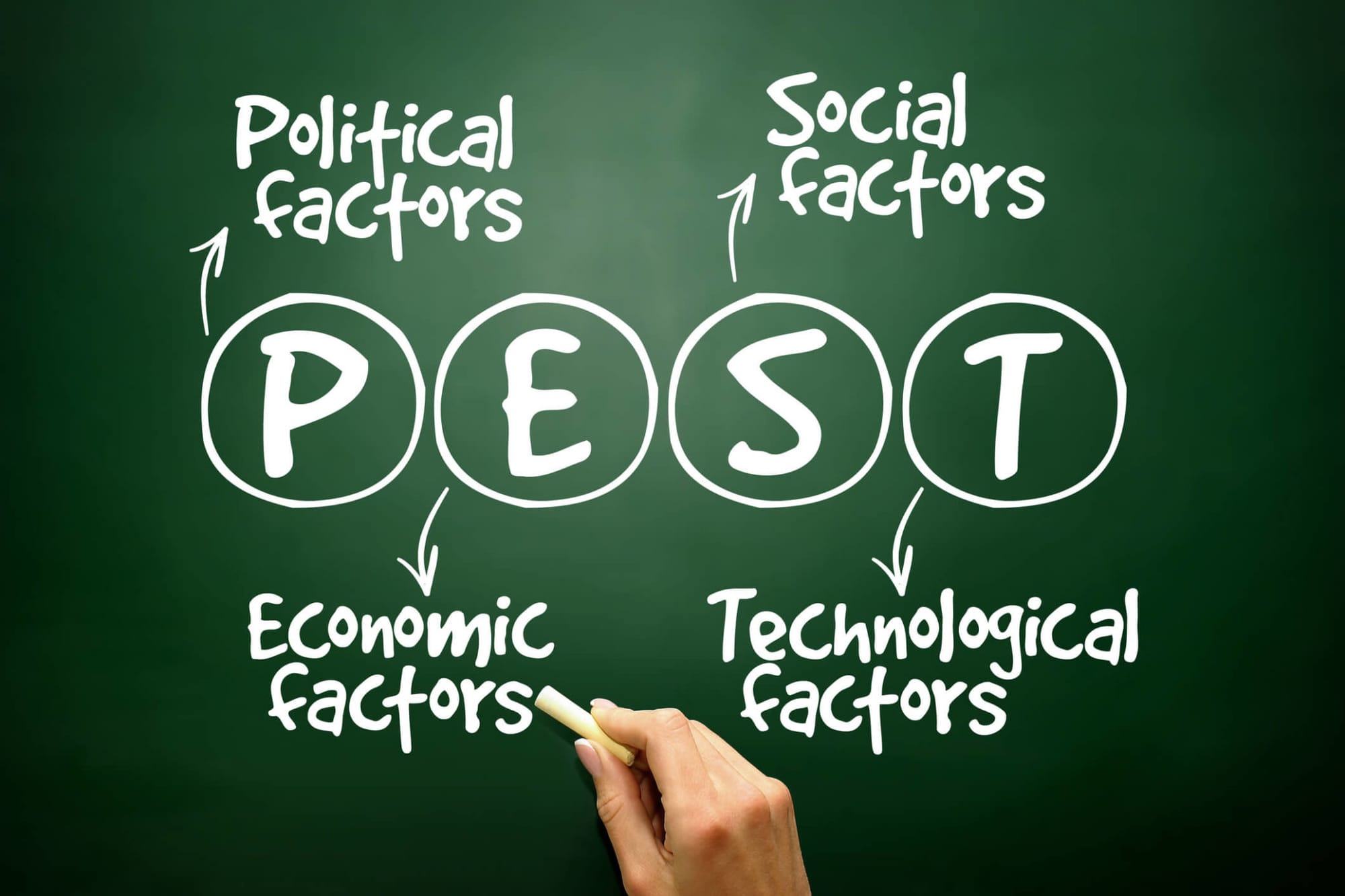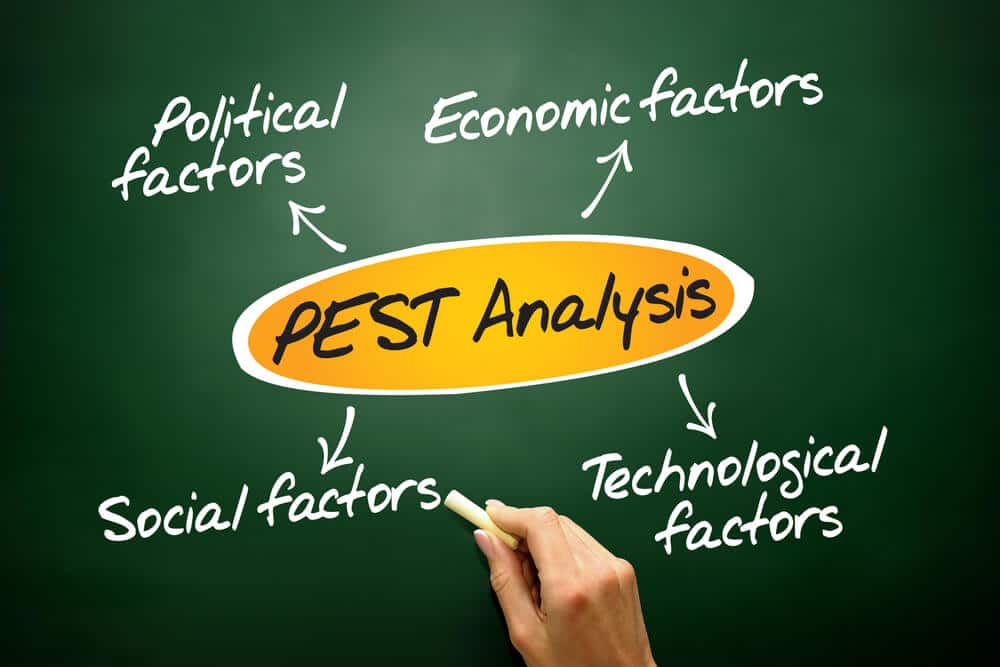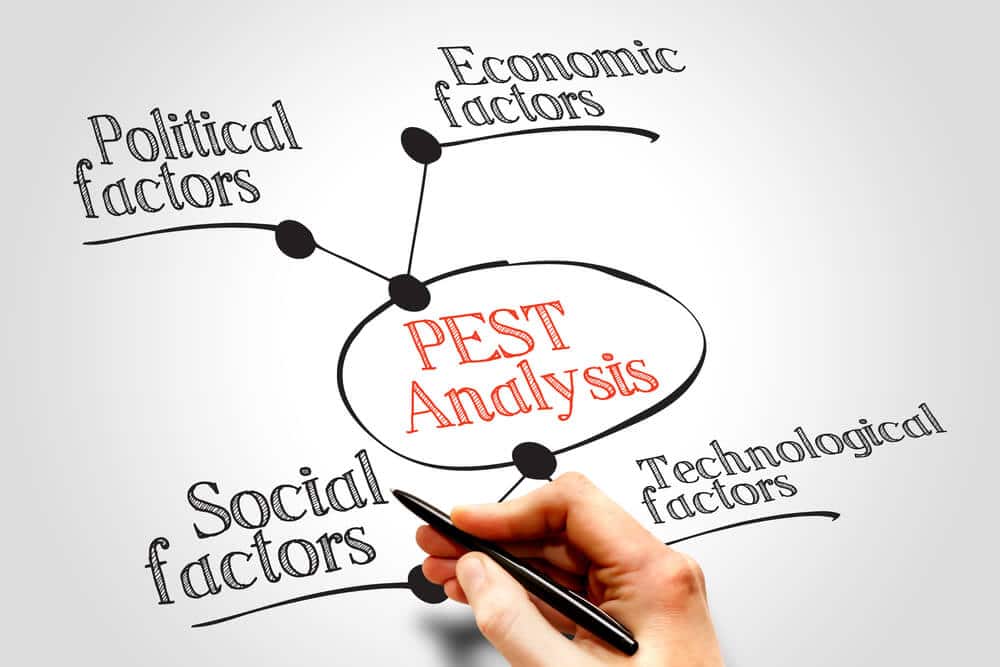While industry factors have a significant impact on the performance of a company, there are a number of external factors that also play an important role in how successful a business can be. So, how do you determine what role those factors are playing in your business?
This is where PEST analysis comes in and allows you to take a look at four external factors, which are political, economic, social and technological, thus giving it the name “PEST.” The tool is used by several organizations as it is effective in projecting the growth of a company in terms of its revenue, profitability and corporate success.
PEST analysis examines outside factors and their influences on business. It’s a strategic planning tool used to understand these factors and measure their impact.
So, how to do a PEST analysis?
Before we do a PEST analysis, you must understand what it is and why we use it.

Step 1: Understand PEST Factors Before Asking How to Do a PEST Analysis
What is PEST analysis? PEST analysis is a tool expressing the macro environment of businesses. Specifically, it helps to understand external factors and their influences on a company.
This analysis stands for political, economic, social, and technological factors. Each of these categories identifies forces that affect every business — but to different degrees. For a business to know how to do a PEST analysis and perform a proper PEST analysis, first it’s important you understand each factor and its scope:
Political Factors
These often relate to legislative laws. Consumer, health and safety, trade, and regulatory requirements are a few to consider. These are laws created by the government and are set by legislative leaders. It is impossible to change these rules as an individual. Legal issues and government regulations affect the probability of a business being successful and profitable.
Economic Factors
They are, but not limited to, inflation, the recession, unemployment/employment rates and interest rates. Companies can attempt to recession-proof their business, but it’s not guaranteed. Neither are the fluctuations in employment and unemployment rates. But they affect the buying capabilities of consumers. And if consumers aren’t buying products, no business is safe.
Social Factors
This examines the cultural and demographic aspects to determine whether the business can compete in the market. Consumer behavior, and purchasing power, are also linked to social factors. Why consumers buy products is studied and transferred to target research. This way companies can market products effectively to the right people. They must consider culture, ethnic backgrounds, health consciousness, social class and many other factors.
Like with political factors, most social factors can’t be changed singlehandedly. They must be observed and understood in order to sell to consumers. While you can offer items to users, there is no guarantee they will buy. You must solve their problem first, and that starts with understanding their needs.
Age distribution, lifestyle changes, population growth, demographics, environmental, health and educational consciousness are some important issues which need to be considered.

Technological factors
These relate to technology issues, complications, and solutions. It deals with everything from cyber-security to manufacturing equipment. Technology is used to market and deliver products.
The technology available can either make it easy or tough to improve the production level or enter the industry. Therefore, things such as government expenditure on technology, technological advancements, and lifecycle of technology available, as well as the role of internet and the changes to it (if any) need to be considered.
It’s also used to address consumer complaints. The company with the best, most agile technology, has a unique competitive advantage.
You must stay up-to-date on the latest technology and be open to utilizing it within your business.
Step 2: Gather Relevant Data
Next, you need to gather as much as relevant data you can about the external environment of the business. If you’ve no idea how to start, you can do competitor analysis. That is, analyzing competitor data and understanding their selling points, complications, and areas they need to improve.
It can provide an overview of information related to strengths and weaknesses as well.
Now focus on your PEST template. Start by breaking down the categories.
Identify Political Factors
You assess political factors first. Address every single law that will affect your business. This means current ones you already adhere to, and things you may need to in the future. Assess the impact of following and not following these laws.
Identify Economic Factors
Once done, move towards economic factors. This list may be long. You must determine market trends, inflation rates, taxes, and new influences within the economy. How high are inflation rates and how does this affect the production and distribution of products? Is the recession affecting sales or growth? How much do you pay in taxes?
Identify Social Factors
Move on towards consumers. If you’ve done target market research, this section may already be completed. You’re looking at trends that affect how and why your target market buy.
For instance, bad PR for your competitor may have consumers thinking twice about using a product. If you supply a similar product, you may want to assess how to differentiate from the issue customers are reporting.

Identify Technological Factors
And lastly, consult your technology. What technology do you use day-to-day? How does it impact business? Where can you upgrade and how will it enhance productivity or reduce costs?
Once this is completed, you’ll know how to do a PEST analysis and will be able to write your PEST analysis from scratch successfully. Measure and utilize your results immediately to monitor how this data positively affects business.
But don't stop there.
Step 3: Identify Opportunities
Once you have gathered all the information necessary on how to do a PEST analysis, the next step is to evaluate it and identify any opportunities these changes can bring to you. That's where SWOT analysis comes in handy. For example, could it open up new markets, help you develop new products, or make processes more efficient?
Step 4: Identify Threats
Other than identifying the opportunities these changes can bring, it’s also important to determine whether they are undermining your business. This would allow you to prevent problems, or at least reduce their intensity. For example, if a decline in a part of your market is imminent could you open up your business in other areas?

Step 5: Take Action Once You Know How to Do a PEST Analysis
Now that you have identified the opportunities, it’s time to take advantage of them by including them in your business plan. Similarly, if there are significant risks, take appropriate steps and measures to eliminate or manage them.










